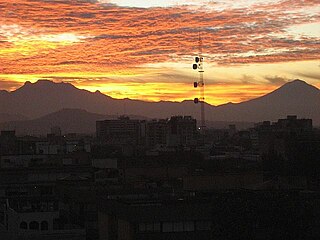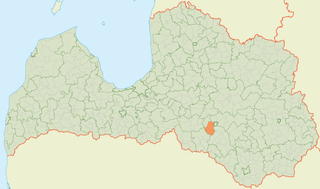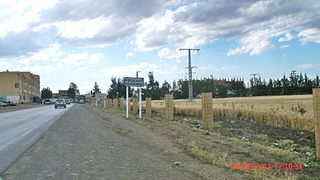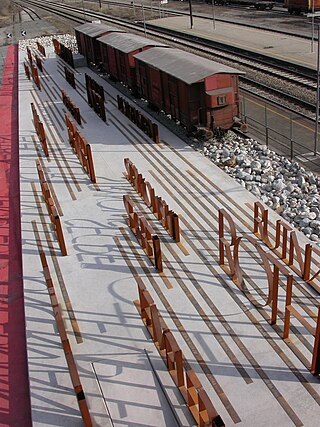
The Passetto di Borgo, or simply Passetto, is an elevated passage that links the Vatican City with the Castel Sant'Angelo. It is an approximately 800-metre-long (2,600 ft) corridor, located in the rione of Borgo. It was erected in 1277 by Pope Nicholas III, but parts of the wall were built by Totila during the Gothic War.

Paso de Cortés is a mountain pass between the Popocatépetl and Iztaccihuatl volcanoes in central Mexico. It is part of the Trans-Mexican Volcanic Belt, at a point where the southeast-trending continental divide turns north for over 16 km (10 mi). The altitude of the pass is about 3,400 m (11,200 ft), and serves as the access point to Izta-Popo Zoquiapan National Park. The pass is located in the municipality of Amecameca in the State of México, about 90 km (56 mi) southeast of Mexico City.

The Archduchy of Austria was a major principality of the Holy Roman Empire and the nucleus of the Habsburg monarchy. With its capital at Vienna, the archduchy was centered at the Empire's southeastern periphery.

Hellbrunn Palace is an early Baroque villa of palatial size, near Morzg, a southern district of the city of Salzburg, Austria. It was built in 1613–19 by Markus Sittikus von Hohenems, Prince-Archbishop of Salzburg, and named for the "clear spring" that supplied it. Hellbrunn was only meant for use as a day residence in summer, as the Archbishop usually returned to Salzburg in the evening; therefore, there is no bedroom in Hellbrunn.
Czarniż is a village in the administrative district of Gmina Brusy, within Chojnice County, Pomeranian Voivodeship, in northern Poland. It lies approximately 6 kilometres (4 mi) south-east of Brusy, 21 km (13 mi) north-east of Chojnice, and 82 km (51 mi) south-west of the regional capital Gdańsk.

Sala Parish is a territorial unit of Jēkabpils Municipality in the Selonia region of Latvia. From 2009 until 2021, it was part of the former Sala Municipality. Prior to 2009, it was part of the former Jēkabpils District.
Locksley Park is a hamlet in the town of Hamburg in Erie County, New York, United States.
Tamaya, Niger is a village and rural commune in Niger.

Raouraoua is a town and commune in Bouïra Province, Algeria. According to the 1998 census it has a population of 7,209.

Slatina is a village in the municipality of Šabac, Serbia. According to the 2002 census, the village has a population of 251 people.

Calvairate is a district (quartiere) of Milan, Italy. It is part of the Zone 4 administrative division, located east of the city centre.
Selište is a village in Croatia. It is located in Sisak-Movalina, about 6 km from Kutina.

Forte de Santo António is a fort in the Azores. It is located in Angra do Heroísmo, on the island of Terceira. <

The Revoltella Museum is a modern art gallery founded in Trieste, Italy, in 1872 by Baron Pasquale Revoltella. The baron, after he left his house to the city and all the works, furniture and books it contained.

The 1934 Women's Western Open was a golf competition held at Portland Golf Club, the 5th edition of the event. Marian McDougall won the championship in match play competition by defeating Mrs. Guy Riegel in the final match, 9 and 7.

Borgo San Dalmazzo was an internment camp operated by Nazi Germany in Borgo San Dalmazzo, Piedmont, Italy.

Panorama is a women's World Cup technical ski course on Zauberberg mountain in Semmering, Lower Austria, opened in 1995.
This page is based on this
Wikipedia article Text is available under the
CC BY-SA 4.0 license; additional terms may apply.
Images, videos and audio are available under their respective licenses.













